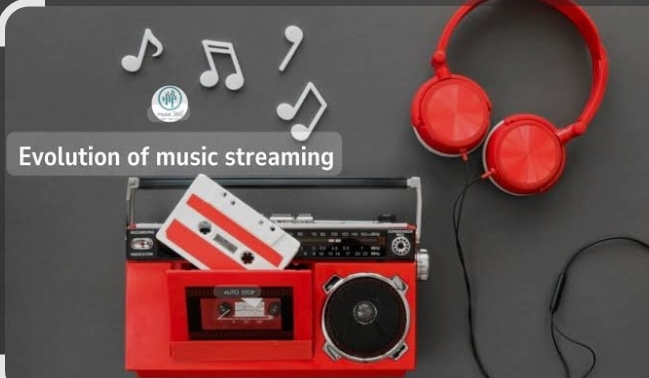
The Evolution of Music Streaming
Music has been an integral part of human culture for centuries, evolving alongside technological advancements. In the last few decades, music consumption has undergone a revolutionary transformation with the advent of digital streaming. This blog explores the journey of music streaming, from its inception to its current dominance, and speculates on what the future might hold.
The Pre-Streaming Era: Physical and Digital Downloads
Before the rise of music streaming, music lovers relied on physical media like vinyl records, cassette tapes, and CDs. Each format had its heyday, with vinyl dominating mid-20th century, cassettes popular in the 1980s, and CDs reigning supreme through the 1990s.
However, the early 2000s marked the beginning of the digital age. Peer-to-peer file-sharing platforms like Napster disrupted the industry by allowing users to share MP3 files. While these services were groundbreaking, they faced significant backlash from the music industry due to copyright violations.
Apple’s iTunes Store, launched in 2003, offered a legal alternative by selling individual songs and albums for download. This model remained dominant for years, paving the way for a digital shift but still tethering users to owning specific files.
The Birth of Music Streaming
The first music streaming platforms emerged in the mid-2000s, offering a new way to access music. Services like Pandora, launched in 2005, introduced the concept of internet radio, where users could stream curated playlists based on their preferences.
In 2008, Spotify revolutionized the industry by introducing on-demand streaming. For the first time, users could access millions of songs instantly without owning them. Spotify’s freemium model, which combined ad-supported free listening with premium subscriptions, set the standard for many future services.
The Streaming Boom
By the 2010s, music streaming was becoming mainstream. Platforms like Apple Music, Amazon Music, and Tidal entered the market, offering unique features like exclusive content and higher audio quality. YouTube also became a significant player, providing free access to music videos and user-uploaded tracks.
The rise of smartphones and affordable internet access played a pivotal role in popularizing streaming. People could now listen to music anywhere, anytime, with minimal effort. Streaming’s convenience and affordability made it the preferred choice for millions of users.
The Impact on the Music Industry
Streaming has fundamentally reshaped the music industry, bringing both opportunities and challenges. On the positive side, it has democratized access to music, allowing independent artists to reach global audiences without the backing of major labels. Platforms like SoundCloud and Bandcamp have further empowered creators to share their work directly with fans.
Financially, streaming has overtaken physical and digital downloads as the primary revenue source for the music industry. According to the Recording Industry Association of America (RIAA), streaming accounted for 84% of total music revenues in 2022.
However, the model has faced criticism for its payment structure. Many artists argue that streaming royalties are insufficient, with only a fraction of a cent earned per stream. This has sparked debates about the sustainability of streaming for smaller creators.
The Role of Algorithms and AI
Streaming platforms have also transformed how people discover music. Advanced algorithms analyze user preferences, listening history, and even moods to curate personalized playlists. Spotify’s Discover Weekly and YouTube’s recommendation engine are prime examples of AI-driven music discovery.
While these algorithms have made finding new music easier than ever, they have also raised concerns about homogenization. Critics argue that algorithmic curation can create “echo chambers”, limiting exposure to diverse genres and artists.
The Future of Music Streaming
As technology continues to evolve, so does the potential for music streaming. Here are some trends and innovations shaping the future:
- 1. High-Resolution Audio: Services like Tidal and Amazon Music HD are leading the charge in offering high-fidelity streaming. As internet speeds improve, more platforms may adopt lossless audio formats.
- 2. Integration with Virtual and Augmented Reality: VR and AR technologies could revolutionize how people experience music. Imagine attending virtual concerts or interacting with holographic performances in your living room.
- 3. Blockchain and Decentralization: Blockchain technology has the potential to address issues like royalty distribution and copyright infringement. Platforms like Audius are already experimenting with decentralized music streaming.
- 4. Expanding Accessibility: Streaming platforms are increasingly focusing on emerging markets. Affordable subscriptions and localized content aim to attract users from regions like Africa, India, and Southeast Asia.
- 5. AI-Generated Music: AI is not just curating music but creating it. Tools like OpenAI’s Jukebox and other generative models can compose original tracks, opening new avenues for creativity and ethical debates.
Conclusion
Music streaming has come a long way, revolutionizing how people consume and discover music. From the early days of internet radio to the sophisticated platforms we use today, the journey reflects broader technological and cultural shifts.
As the industry continues to innovate, it faces the challenge of balancing user convenience with fair compensation for artists. The future of music streaming promises to be just as dynamic and transformative as its past, ensuring that music remains an ever-present force in our lives.
Here’s a detailed blog on the evolution of music streaming. Let
me know if you’d like to make any revisions or add more details!
Leave a Reply